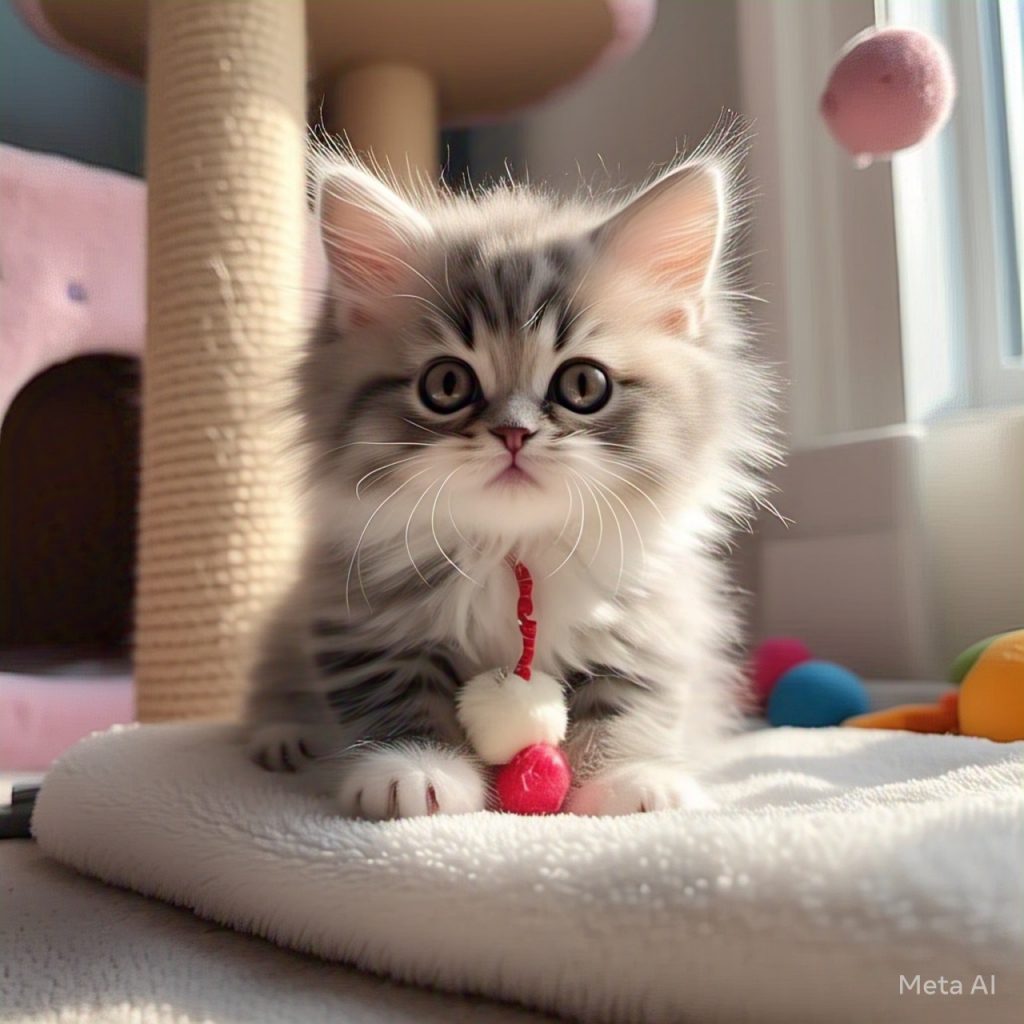Cats, like humans, go through a process of losing their baby teeth and growing adult ones. This natural transition, known as kitten teething, is an essential part of a cat’s development. If you’ve ever wondered why your kitten is chewing everything in sight or found tiny teeth around your home, you’re witnessing the teething process in action.
In this article, we will explore everything you need to know about teething kittens, including the stages of cat baby tooth development, common signs of teething, and how to help your kitten through this sometimes uncomfortable phase.
1. Do Cats Change Teeth? Understanding Kitten Dental Development
Yes, cats do change teeth! Just like human babies, kittens are born without teeth. They first develop deciduous (baby) teeth, which eventually fall out to make room for permanent adult teeth.
Kittens go through two stages of dental development:
- Deciduous Teeth (Baby Teeth) Development – 2 to 6 weeks old
- Kitten Teething (Losing Baby Teeth & Growing Adult Teeth) – 3 to 6 months old
Understanding these stages will help you support your teething kitten through their growth.
2. Stage 1: Kitten Baby Teeth Development (2 to 6 Weeks Old)
A. When Do Kittens Get Their Baby Teeth?
Kittens start developing their cat baby tooth set at around 2 weeks old. By the time they reach 6 weeks old, they will have a full set of 26 baby teeth.
Here’s a timeline of baby teeth eruption:
| Age (Weeks) | Teeth Growing In |
|---|---|
| 2-3 Weeks | Incisors (small front teeth) |
| 3-4 Weeks | Canines (sharp fangs) |
| 4-6 Weeks | Premolars (back teeth) |
At this stage, kittens are still nursing, but as their baby teeth emerge, they begin transitioning to soft kitten food.
3. Stage 2: Kitten Teething – Losing Baby Teeth & Growing Adult Teeth (3 to 6 Months Old)
Once a kitten reaches 3 to 4 months old, their baby teeth start falling out, making way for 30 permanent adult teeth.
A. Timeline of Kitten Teething
| Age (Months) | Teeth Falling Out & Adult Teeth Growing In |
|---|---|
| 3-4 Months | Incisors (front teeth) begin falling out |
| 4-5 Months | Canines (sharp fangs) replace baby canines |
| 5-6 Months | Premolars and molars grow in |
By 6-7 months old, all 30 adult teeth should be in place.
B. Common Signs of a Teething Kitten
A teething kitten may show several signs of discomfort, including:
✔ Increased Chewing: Kittens will chew on furniture, toys, or even your hands to soothe gum discomfort.
✔ Drooling: Excess saliva production is common as baby teeth loosen.
✔ Mild Bleeding: You may notice tiny blood spots on toys or food.
✔ Loss of Appetite: Some kittens may eat less due to gum sensitivity.
✔ Irritability: Teething can make kittens a bit grumpy or restless.
✔ Baby Teeth Falling Out: You might find tiny white cat baby tooth fragments on the floor or near their bedding.
While most kittens experience mild discomfort, severe pain, excessive bleeding, or refusal to eat could indicate a problem that requires veterinary attention.
4. How to Help a Teething Kitten
Since kitten teething can be uncomfortable, providing relief is essential. Here are some ways to help your kitten during this stage:
A. Provide Safe Chew Toys
Giving your teething kitten appropriate chew toys can prevent them from biting furniture or hands. Some good options include:
✔ Rubber teething toys – Soft and flexible for sore gums
✔ Chilled washcloths – Provides a cooling sensation to ease discomfort
✔ Kitten-safe dental chews – Helps promote healthy chewing behavior
B. Use Soft or Wet Food
If your kitten is struggling with dry kibble, try switching to:
✔ Canned kitten food
✔ Moistened dry food with warm water
✔ Blended soft food for easier chewing
C. Gently Massage Their Gums
If your kitten allows it, use a clean finger or soft cloth to gently rub their gums, which can provide relief.
D. Maintain Good Oral Hygiene
Start introducing a kitten-friendly toothbrush and pet-safe toothpaste early to establish good dental habits. This will prevent future dental issues.
5. What Happens If a Kitten’s Baby Teeth Don’t Fall Out?
In some cases, a kitten may experience retained baby teeth, meaning the baby tooth does not fall out as the adult tooth grows in. This can cause:
❌ Overcrowding – Leading to misaligned teeth and dental pain
❌ Gum Disease & Decay – Trapped food can cause infections
❌ Difficulty Eating – The kitten may struggle with chewing
Solution:
If your kitten has a retained cat baby tooth, a veterinarian may need to extract it to ensure proper dental alignment.
6. How to Care for Your Cat’s Adult Teeth
Once your kitten has all their adult teeth, dental care is essential to maintain oral health.
✔ Brush Your Cat’s Teeth – Use a soft-bristled pet toothbrush and cat-safe toothpaste 2-3 times per week.
✔ Provide Dental Chews – Helps prevent tartar buildup.
✔ Regular Vet Checkups – A veterinarian can check for dental issues.
✔ Monitor for Signs of Dental Disease – Bad breath, red gums, or difficulty eating may indicate dental problems.
Final Thoughts: Understanding Kitten Teething & Cat Baby Tooth Development
So, do cats change teeth? Absolutely! Kittens experience kitten teething as they transition from cat baby tooth growth to permanent adult teeth.
✔ Baby teeth emerge between 2-6 weeks old
✔ Teething kittens lose baby teeth between 3-6 months old
✔ By 6-7 months, all adult teeth should be in place
Teething can be a challenging time for kittens, but with proper care, chew toys, and good dental hygiene, your cat will grow strong, healthy teeth that last a lifetime!
Would you like recommendations for the best kitten teething toys? Let me know!

